The term flexitarian, a shortened form of “flexible vegetarian,” was coined by Dawn Jackson Blatner, a registered dietitian (RD) who published the first flexitarian diet book in 2010. In her words “You can think of this diet as a ‘vegetarian-ish’ way of eating since this plan touts the basic principles and benefits of a plant-based diet, along with the inclusion of some animal proteins to a lesser extent.” Blatner outlines a scale based on how much meat you’re used to eating, but the general principle is to reduce the amount of meat in your diet and increase the amount of plant based food – vegetables, grains and plant based proteins like tofu, nuts and legumes, for better health and weight-loss:
- Eat mostly fruits, vegetables, legumes and whole grains.
- Focus on protein from plants instead of animals.
- Be flexible and incorporate meat and animal products from time to time.
- Eat the least processed, most natural form of foods.
- Limit added sugar and sweets.
An added and very important benefit of a flexitarian diet is the reduced environmental footprint of eating less meat. And, If you add eating organic to that mix you’ve helped your health and the planet that much more!
Why a Flexitarian-Organic diet is good for You and the Planet.
- Eating less meat will lower our environmental footprint. Greenhouse gases released by livestock, deforestation and water shortages are the main ways that conventional meat production hurt the planet. Researchers say there is no easy fix to slow climate change, but reducing our intake of meat is one way that everyone can help. A 2018 study predicts that a global shift towards a flexitarian diet could cut greenhouse gas emissions by 56 percent, and would reduce other environmental impacts by 6 to 22 percent. The global food system emitted around 5.7 billion tons of carbon dioxide in greenhouse gas emissions in 2010, in addition to using vast amounts of cropland, fresh water and fertilizers containing nitrogen and phosphorus (which pollute waterways as agricultural runoff).
- Organic farming and livestock is better for your health and the environment – if you’re eating organic plant based food and restrict your meat intake to organic grass- fed meats, you will prevent even more damage to the environment. Choosing organic is the easiest, don’t-have-to-worry-about-it way to insure you’re not eating pesticides or high doses of synthetic hormones and antibiotics. Commonly used pesticides like Glyphosate, Chlorpyrifos and Atrazine are used in conventional agriculture in the United States. Organic food is produced without using conventional pesticides; fertilizers made with synthetic ingredients or sewage sludge; bio-engineering; or ionizing radiation. In addition organic meat, poultry, eggs and dairy come from animals that are not given antibiotics or growth hormones. All those contaminants aren’t only bad for your health they’re bad for the environment, they contaminate our soil and enter our water sources contaminating our fish and our drinking water.
Eating Organic Flexitarian can be Delicious!
I’ve chosen five recipes to share that are so delicious you won’t miss meat in the meatless dishes, and you’ll savor the organic meat in small doses when it’s included.
Farro with wine braised mushrooms: Organic farro cooks in about 20 minutes, so start by bringing two cups of water, with a pinch of sea-salt, to a boil and boil some water separately in a kettle (you’ll need one cup from the kettle); rinse a cup of organic farro with cold water, drain and add to boiling water. Boil uncovered for 20 minutes. Tear into bite-size pieces 1/4 cup of dried shiitake mushrooms into a small bowl, cover with 1 cup of boiling water from teapot and set aside. While farro cooks, saute one bunch of chopped organic green onion, in 2 T organic olive oil until soft, add 3 cloves of organic garlic, finely chopped and cook for another minute. Add 3 cups of sliced organic white-button mushrooms and saute until the edges start to brown. Add softened shiitake mushrooms and 1/2 cup of the mushroom water (be careful to not pour in the grainy residue that’s at the bottom of the water). Add 1/2 cup organic white wine. Simmer on low heat until broth thickens. Serve over cooked farro and top with freshly chopped organic cilantro. 
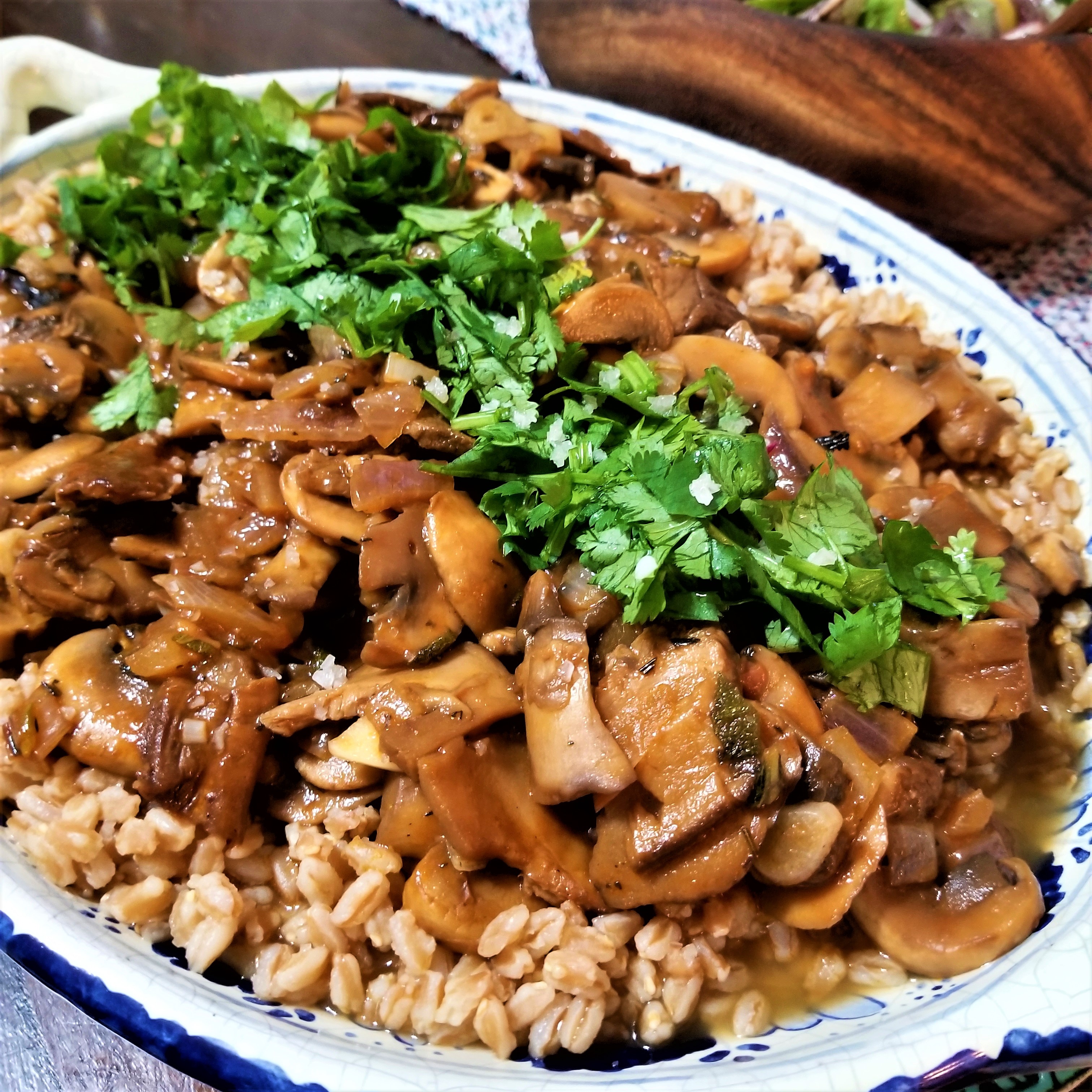
Savory Tomato Pie: Preheat oven to 390F. To make the pie crust: Add 2 coups organic all-purpose flour, 1/2 t fine sea-salt and 1/4 t baking powder in a medium sized bowl. Cut 7 T cold organic butter in small pieces and use your hands to mix until butter is thoroughly mixed and the consistency is grainy. Add 6 T of ice water, 2 T at a time, stirring with the sharp blade of your knife to mix through, until you can knead the dough into a smooth ball (don’t over-knead). Wrap the dough in a clean dish-cloth and refrigerate. Slice organic plum tomatoes, about 3 cups worth, and chop 1/4 sun-dried tomatoes (if you can find the semi-fresh sun-dried sold deli-style they are nicer than what you can find in a jar). Take dough out of fridge and roll out onto a floured counter, about 1/4 inch thick. Lay dough in a pie-dish, there will be ample extra draping over the sides of the dish. and layer fresh and sun-dried tomatoes with 1/4 cup chopped kalamata olives. sprinkle salt and pepper and 3 oz of fresh goat cheese over the top. Loosely fold extra pie-dough over tomatoes, leaving a good portion exposed. Bake for 25-30 minutes, until crust is golden. 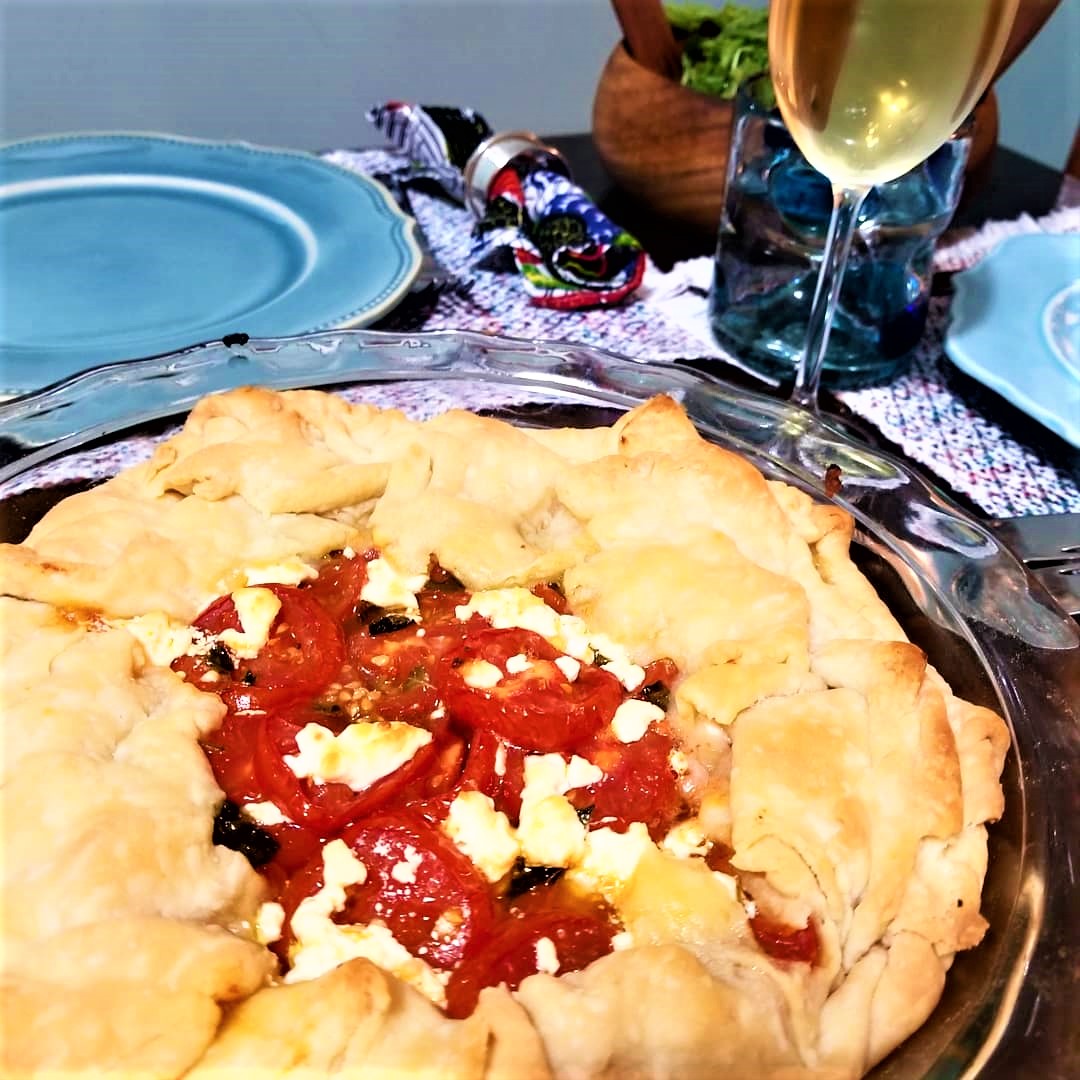
Marinated Portobello Mushrooms over Mashed Potatoes: This fabulous recipe is from The Minimalist Baker! I added the mashed potatoes to make it a more hardy meal, and for meat&potato lovers this is a very satisfying dish,you won’t miss the meat! If you don’t already have your own favorite mashed potato recipe: Peel and chop russet potatoes in quarters (1-2 large potatoes per person) add to boiling, slightly salted water. Boil for 15 minutes until soft. Transfer potatoes to large bowl and add 2 T organic butter, 2T organic heavy cream and mash with a potato masher. Salt and Pepper to taste. 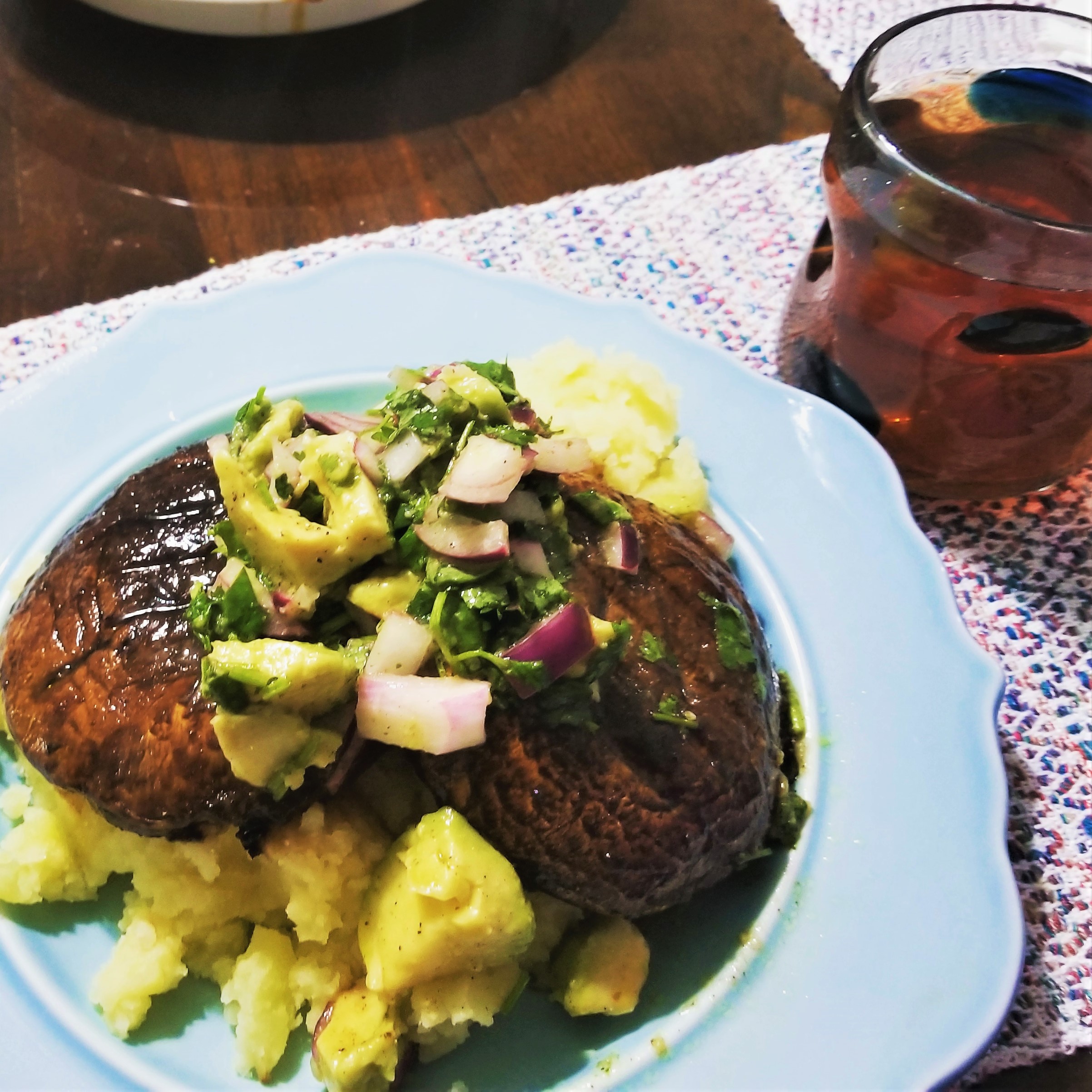
Maqluba is a layered rice-cake eaten throughout Middle-Eastern countries. This is a vegetarian recipe from NYTimesCooking. it’s delicious and beautiful, perfect when guests are over for dinner. I gravitate towards smaller tomatoes because I think they’re more flavorful so I used organic plum tomatoes and organic cherry tomatoes in place of beefsteak tomatoes. 
Split Pea Soup topped with Organic Bacon (serves 3): When you do eat meat, make it count! Adding organic thick-cut bacon to your split-pea soup turns it into a flavor-bomb of hearty goodness, perfect for a winter-evening dinner. Served with a fresh green salad and a tasty Mexican cornbread, recipe from Pinch and Swirl, it’s very satisfying meal: Sort and wash 8 oz of organic split peas and set aside. Cook 1lb of thick-sliced organic bacon (6-8 slices) on high heat in a dutch-oven pot. When bacon is crispy transfer to a paper-towel lined plate, leaving grease in pot. Dice 1 organic sweet onion and add to bacon grease, cook over medium heat until soft, about 3 minutes. Add 2 organic carrots, diced and 2 stalks of organic celery, diced. Cook for another 3 minutes, stirring often so nothing sticks. Add washed split-peas, 1 t sea-salt and 1/2 t black pepper. Add 4 cups organic vegetable broth and bring to a boil. Lower heat, cover pot and simmer for 20 minutes or until split-peas are soft and soup is thick. Garnish each bowl with two pieces of bacon. 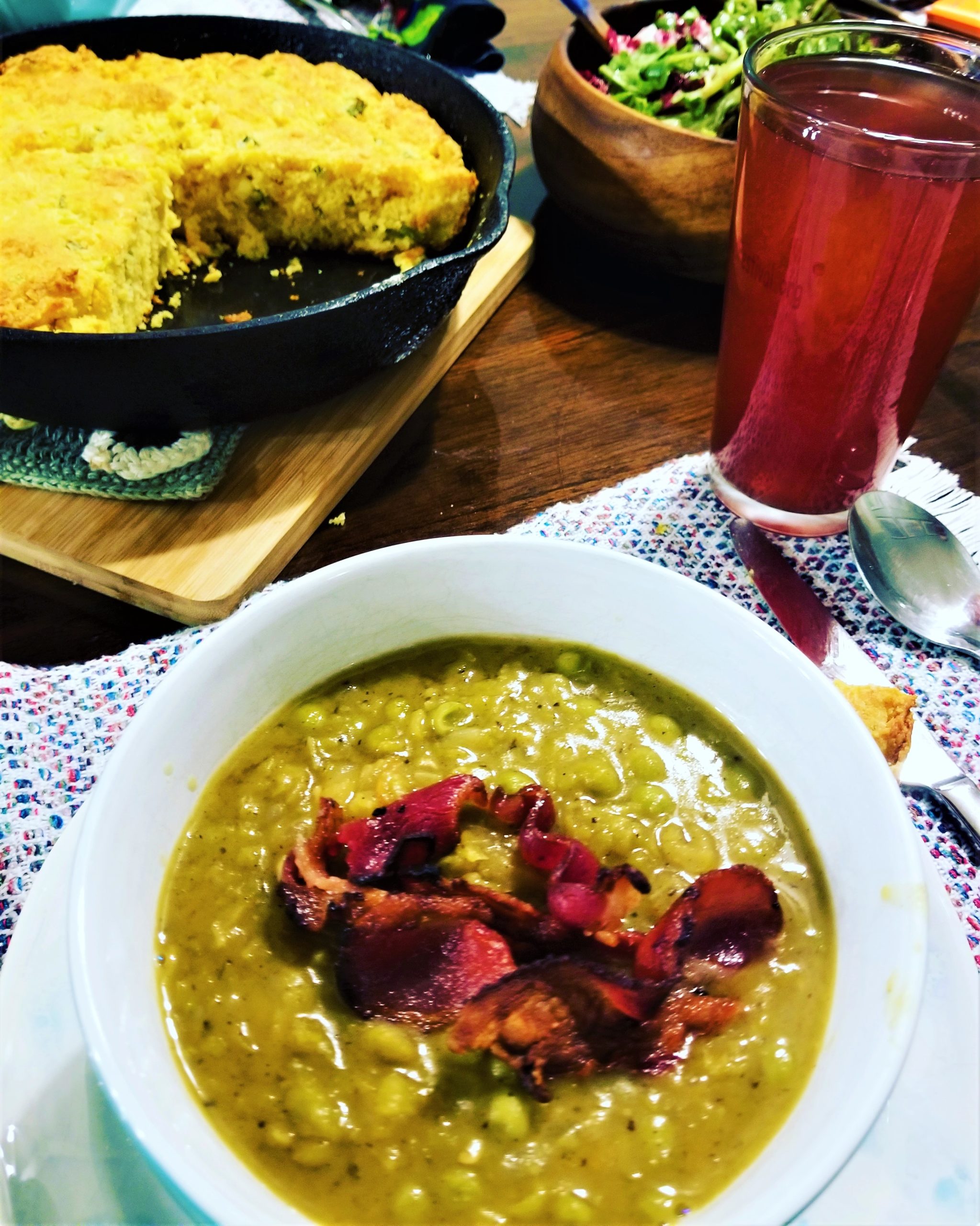
Eating Organic Flexitarian Helps Save the World
Cooking with organic produce supports organic farming, and organic farms use production practices with environmental benefits such as water management practices, no-till or minimum tillage, habitat maintenance for beneficial insects and vertebrates and biological pest control. These ecologically protective practices contribute to enhanced ecosystem services and benefit water quality, soil health and biodiversity (Find out more at https://ofrf.org/research/organic-faqs/). When farmers and ranchers are organic they aren’t using harmful pesticides, artificial hormones and antibiotics which contaminate our soil and drain into our water supplies – our ponds, streams, rivers and oceans.
Eating more vegetarian meals and buying grass-fed organic meat when you do eat meat will send a strong message (with your pocketbook!) to the meat industry that factory-farms are no longer viable for our health or the environment. Finally, cooking from scratch at home generally requires a lower environmental footprint than eating processed foods or carryout. You’re using less packaging – less plastic wrapping, less cardboard boxes, no carry-out containers or bags. Whole plant food requires less energy to produce than highly manufactured processed food. Less production energy means a lower environmental footprint.
With an organic flexitarian diet we improve our diet, enjoy fabulous food and help the environment: a win-win-win formula for Saving The World!
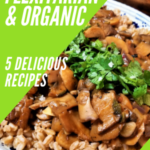
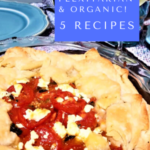
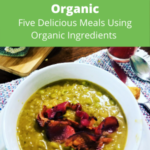

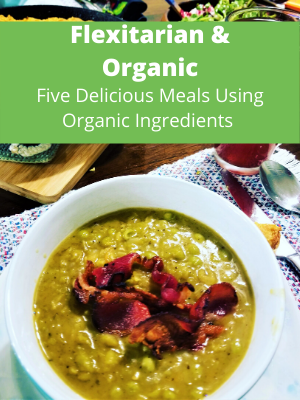
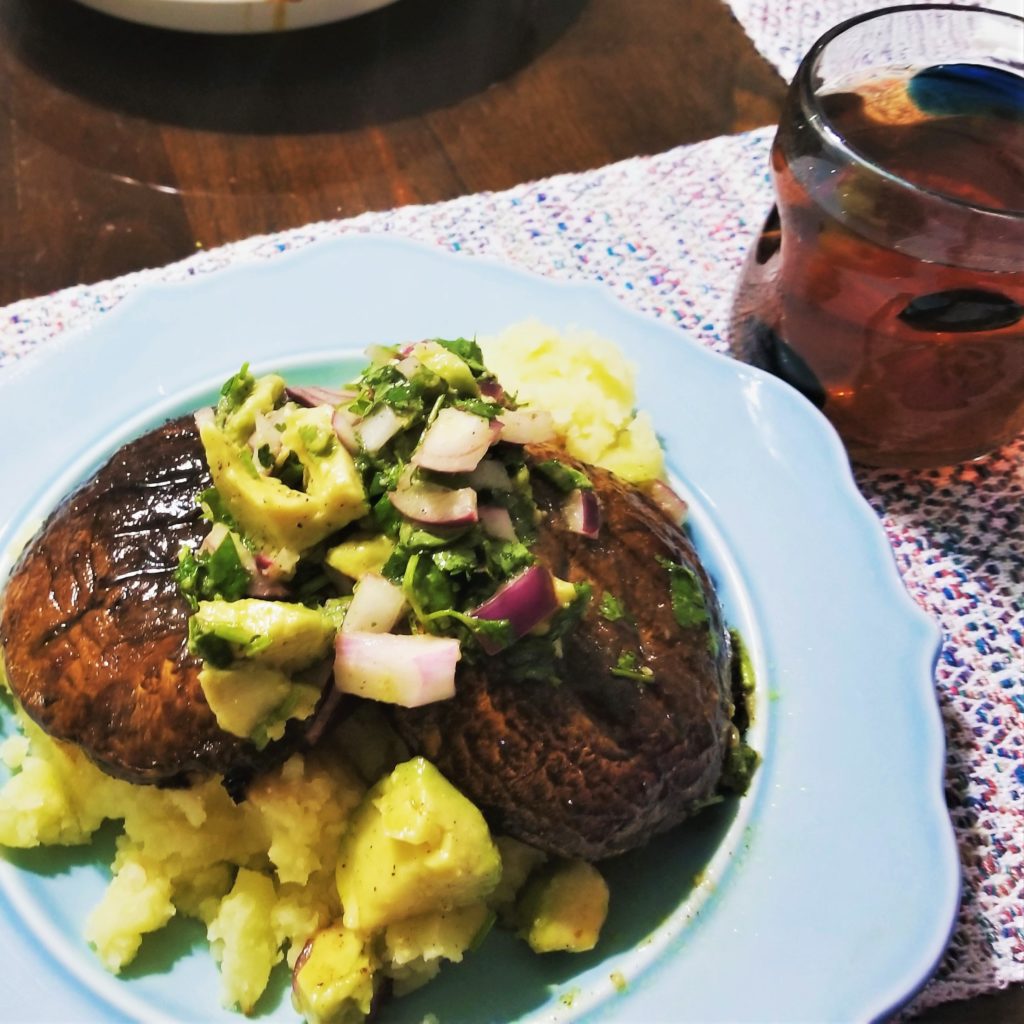
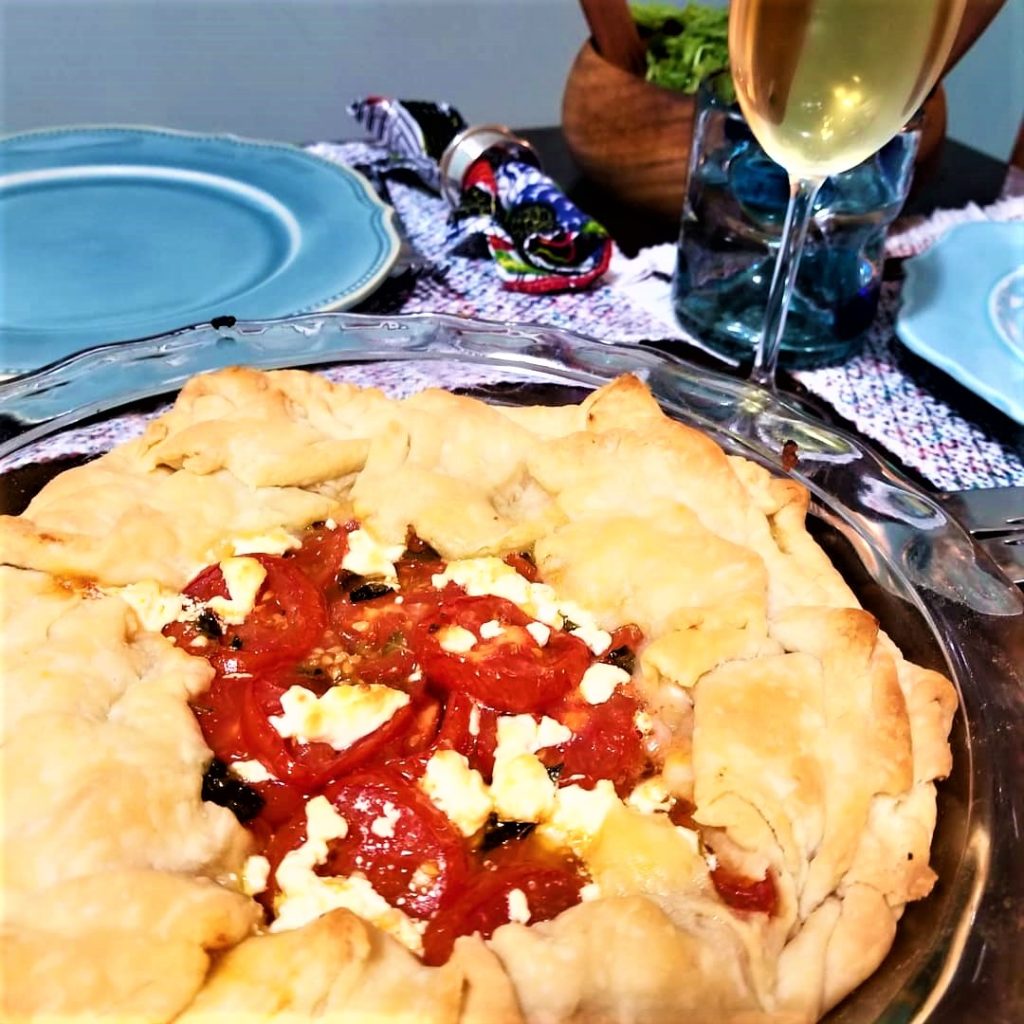

Thank you for your blog Wanda! Looking forward to your recipes!
Thank you Jodie! I look forward to your thoughts on the blog-posts, I’m having fun with this and hope it’s hitting a chord with people 🙂
Sam and I are moving towards a flexitarian diet and it’s such a joy to read your blog!
Hey Megan, that’s great! Thank you for following the blog, and if you try any of the recipes please let me know how you like them!